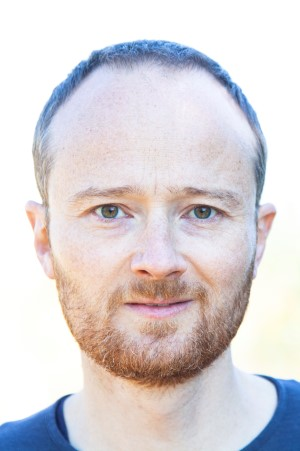
Philipp Maass
Biography
Dr. Maass is a Senior Scientist of the Genetics & Genome Biology program of the SickKids Research Institute and Assistant Professor at the University of Toronto. His postdoctoral trainings at well-known scientific institutes, including the Max-Delbrück Center for Molecular Medicine in Berlin and Harvard University in Cambridge, Massachusetts, provided him with the necessary background and technical expertise to broaden the understanding of non-coding disease mechanisms.
Research
Dr. Maass’s research program focuses on functional regions of the non-coding genome that impact development and disease mechanisms. Specifically, Dr. Maass aims to understand inter-chromosomal communication and long non-coding RNAs which represent novel fields in chromatin biology and gene & genome regulation.
Education and experience
- 2025-Present: Senior Scientist, Genetics & Genomc Biology program, The Hospital for Sick Children, Toronto, Canada
- 2018–2025: Scientist, Genetics & Genome Biology program, The Hospital for Sick Children, Toronto, Canada
- 2018–Present: Assistant Professor, Department of Molecular Genetics, University of Toronto, Toronto, Canada
- 2015–2018: Postdoctoral Researcher, Harvard University, Department of Stem Cell and Regenerative Biology, Cambridge, USA
- 2019–2015: Postdoctoral Researcher, Co-Principal Investigator, Max Delbrück Center for Molecular Medicine (MDC) Berlin, Germany
Achievements
- 2019: Canada Research Chair Tier II in Non-coding Disease Mechanisms, Canada
- 2018: Walter-Siegenthaler Award, Walter-Siegenthaler Society
Publications
- Sholokh A, Walter S, Markó L, McMurray BJ, Sunaga-Franze DY, Xu M, Zühlke K, Russwurm M, Bartolomaeus TUP, Langanki R, Qadri F, Heuser A, Patzak A, Forslund SK, Bähring S, Borodina T, Persson PB, Maass PG, Bader M, Klussmann E. Mutant phosphodiesterase 3A protects the kidney from hypertension-induced damage. Kidney Int. 2023 May 25:S0085-2538(23)00389-7. doi: 10.1016/j.kint.2023.04.026. Epub ahead of print. PMID: 37244472.
- Oliveros W, Delfosse K, Lato DF, Kiriakopulos K, Mokhtardioost M, Said A, McMurray BJ, Browning JWL, Mattioli K, Meng G, Ellis J, Mital S, Mele M, Maass PG. Systematic characterization of regulatory variants of blood pressure genes. Cell Genomics. 2023, 100330, ISSN 2666-979X, https://doi.org/10.1016/j.xgen.2023.100330.
- Shokrollahi M, Stanic M, Hundal A, Chan JNY, Urman D, Hakem A, Garcia ER, Hao J, Maass PG, Dickson BC, Hande MP, Pujana MA, Hakem R, Mekhail K. DNA double-strand break-capturing nuclear envelope tubules drive DNA repair. Cold Spring Harbor Laboratory; 2023 May. https://doi.org/10.1101/2023.05.07.539750
- Ercu M, Markó L, Schächterle C, Tsvetkov D, Cui Y, Maghsodi S, Bartolomaeus TUP, Maass PG, Zühlke K, Gregersen N, Hübner N, Hodge R, Mühl A, Pohl B, Illas RM, Geelhaar A, Walter S, Napieczynska H, Schelenz S, Taube M, Heuser A, Anistan YM, Qadri F, Todiras M, Plehm R, Popova E, Langanki R, Eichhorst J, Lehmann M, Wiesner B, Russwurm M, Forslund SK, Kamer I, Müller DN, Gollasch M, Aydin A, Bähring S, Bader M, Luft FC, Klussmann E. Phosphodiesterase 3A and Arterial Hypertension. Circulation. 2020 Jul 14;142(2):133-149. doi: 10.1161/CIRCULATIONAHA.119.043061. Epub 2020 Jun 11. PMID: 32524868.
- Ercu M, Mücke MB, Pallien T, Markó L, Sholokh A, Schächterle C, Aydin A, Kidd A, Walter S, Esmati Y, McMurray BJ, Lato DF, Yumi Sunaga-Franze D, Dierks PH, Flores BIM, Walker-Gray R, Gong M, Merticariu C, Zühlke K, Russwurm M, Liu T, Batolomaeus TUP, Pautz S, Schelenz S, Taube M, Napieczynska H, Heuser A, Eichhorst J, Lehmann M, Miller DC, Diecke S, Qadri F, Popova E, Langanki R, Movsesian MA, Herberg FW, Forslund SK, Müller DN, Borodina T, Maass PG, Bähring S, Hübner N, Bader M, Klussmann E. Mutant Phosphodiesterase 3A Protects From Hypertension-Induced Cardiac Damage. Circulation. 2022 Dec 6;146(23):1758-1778. doi: 10.1161/CIRCULATIONAHA.122.060210. Epub 2022 Oct 19. PMID: 36259389.
See a full list of Dr. Maass' publications on PubMed or Google Scholar.
Funding
2022–2025: “Decoding the impact of a novel RNA gene on hypertension” Principal Investigator. Heart and Stroke Foundation of Canada – Grant-in-Aid
2020–2025: “Decoding the biology of inter-chromosomal contacts” Principal Investigator. Natural Sciences and Engineering Research Council of Canada – Discovery Grant
2020–2025: “Decoding gene & genome-regulatory functions of the RNA gene CISTR-ACT” Principal Investigator. Canadian Institutes of Health Research – Project Grant
2020–2021: "Maud Menten New Principal Investigator Prize in Genetics: Decoding gene & genome regulatory functions of the RNA gene CISTR-ACT" Principal Investigator. Canadian Institutes of Health Research - Maud Menten New Principal Investigator Prize in Genetics
Relevant pages
The Maass Lab aims to gain mechanistic insight into the regulatory functions of the non-coding genome.

